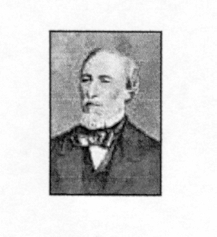This 5 Oct 1850 stampless entire inwards letter from India, has a framed Calcutta datestamp on the reverse and is addressed to J.S. Roe Esqre R.N., Surveyor General, Swan River Settlement. It has a manuscript per Lady Margaret -via Adelaide plus a mss. ‘8’. On the right, there is a vertically written ‘Calcutta. 5 October 1850. W. Bubly/Recd. 25 Oct 1851 p. “Unknown” via S Australia. The provenance of the item was Ex Juhl (Figure 1).
J.S. Roe was the seventh son of the Rev. James Roe, and he was born at Newbury, Berkshire, in 1797. He was educated at Christ’s hospital school, London, and entered the navy as a midshipman in 1813. He was chiefly on the East India station where he was promoted to lieutenant. In 1817 he was with Phillip Parker King on his expedition around the coast of Australia, and again in 1821. He saw active service in the Burmese war 1825-7, and in December 1828 was appointed surveyor-general of Western Australia. A photp of him is seen in Figure 2.

He arrived at the mouth of the Swan River in the Parmelia with Governor Stirling on 1 June 1829. He made the preliminary surveys, and the sites of Perth and Fremantle were chosen on his recommendation. Roe was fully employed for some time surveying blocks for the settlers, but he found time to do some exploring of the country in the vicinity of Perth and along the coast.
In 1836 he made his first expedition to the inland, when he explored the tableland to the north and east of Perth. He reached as far as Lake Brown but found little country fit for settlement. In 1839 Roe did good work in finding and rescuing some of the men of the unfortunate expedition led by Captain Grey. His most important piece of exploring took place in 1848, when as leader of a party of five, he explored the country to the southeast of Perth and the northeast of Albany. He was away for about five months and covered a distance of nearly 1800 miles. Much desolate sandy and rocky country was traversed, and though little good land was found, Roe discovered coal in two separate localities. This was the last of Roe’s expeditions but he continued to be surveyor-general until 1871.
He was much interested in science and was a fellow of the Linnaean Society. His scientific collection formed the basis of the present museum at Perth, and he was largely, if not entirely, responsible for setting aside the King’s Park at Perth as a permanent reserve. He died at Perth on 28 May 1878. He was married when he arrived in Western Australia and there was a family of six sons and at least two daughters. His youngest son, A. S. K. Roe, was for many years a well known police magistrate at Perth, and other descendants have played a prominent part in the development of the West.
Roe was a good public servant and he takes a high rank among Australian explorers. He was excellent in observing and recording the country he passed through, and thoroughly capable in managing expeditions and carrying them to a successful conclusion. The town of Roebourne is named after him. He remained in the post of surveyor-general until his retirement in 1870, and he died in Perth in 1878. He was an accomplished water colourist and many of his paintings were recorded in his log book.